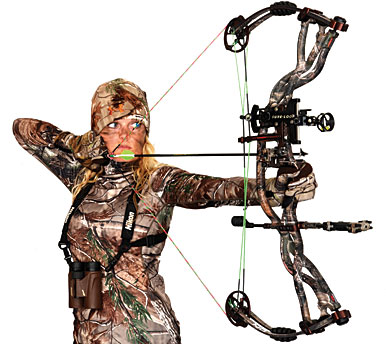Stay Steady: Discovering the Perks of Compound Bow Stabilizers
Stay Steady: Discovering the Perks of Compound Bow Stabilizers
Blog Article
Optimizing Your Archery Efficiency With the Right Compound Bow Stabilizer: a Detailed Summary
In the realm of accuracy, archery and uniformity are critical to attaining optimum efficiency. One vital yet often-overlooked element in improving precision is the compound bow stabilizer. This humble device plays a significant duty in steadying your purpose, reducing bow torque, and absorbing vibrations. The efficiency of a stabilizer pivots on different elements, including style, positioning, and weight. By comprehending the subtleties of picking and optimizing a substance bow stabilizer, archers can fine-tune their equipment to elevate their capturing experience to new degrees of effectiveness and control.
Relevance of Bow Stabilizers in Archery

Furthermore, bow stabilizers assist in balancing the weight circulation of the bow, which can improve the archer's security while aiming and firing. By adding weight to the front of the bow, stabilizers can decrease the quantity of torque experienced upon launch, leading to a smoother and more regulated shot - compound bow stabilizer. This weight distribution likewise helps in holding the bow constant for a longer period, permitting the archer to aim more accurately
Sorts Of Compound Bow Stabilizers
When thinking about the numerous kinds of substance bow stabilizers readily available, it is crucial to comprehend their unique functions and functions to identify the most suitable option for making the most of archery efficiency. The most usual types of substance bow stabilizers consist of sidebar stabilizers, front stabilizers, and back stabilizers. Back stabilizers, also called rear stabilizers, are installed to the back of the bow and help in counterbalancing the weight of other accessories, resulting in boosted stability and constant intending.
Factors to Take Into Consideration When Choosing
In assessing substance bow stabilizers, understanding the distinct attributes and functions of each kind is critical for making an informed choice on the most ideal option to enhance archery efficiency. When selecting a stabilizer, one must think about the weight of the stabilizer itself. By very carefully assessing these useful source factors, archers can choose a substance bow stabilizer that aligns with their shooting style and maximizes their overall efficiency on the archery variety.
Installment and Modification Tips
For optimum performance and precision in archery, grasping the installment and change of your bow stabilizer is crucial. Appropriate setup begins with attaching the stabilizer to the bow's riser, ensuring it is securely protected.
When changing the stabilizer, start with small step-by-step adjustments rather than extreme adjustments. This enables you to examine the influence of each adjustment precisely. Take notice of exactly how the bow responds explanation to changes in stabilizer settings and make adjustments as necessary. Keep in mind that the objective is to find an arrangement that reduces hand torque, reduces resonance, and enhances accuracy. Routinely examine the stabilizer's rigidity and total problem to ensure it proceeds to operate optimally. By understanding the setup and change procedure, you can maximize your archery efficiency and raise your capturing experience.
Maintenance and Treatment Guidelines

It is additionally crucial to save your bow with the stabilizer in a secure and safe and secure place when not in use. Following these upkeep and treatment guidelines will help you get the most out of your bow find stabilizer and improve your total archery performance.
Conclusion
To conclude, selecting the right substance bow stabilizer is crucial for making best use of archery performance. Recognizing the significance, types, aspects to consider, installation and modification ideas, in addition to maintenance and treatment standards can greatly impact one's accuracy and uniformity in shooting. By picking a stabilizer that fits specific needs and choices, archers can enhance their overall performance and attain much better outcomes on the range or in competitors.
Bow stabilizers play an important role in improving an archer's precision and uniformity by lowering vibrations and maintaining the bow throughout the release of an arrowhead - compound bow stabilizer.Additionally, bow stabilizers help in stabilizing the weight distribution of the bow, which can improve the archer's stability while firing and intending. The most common types of substance bow stabilizers include sidebar stabilizers, front stabilizers, and back stabilizers. Back stabilizers, additionally called rear stabilizers, are placed to the back of the bow and help in counteracting the weight of various other devices, resulting in enhanced security and stable aiming. When selecting a stabilizer, one need to think about the weight of the stabilizer itself
Report this page